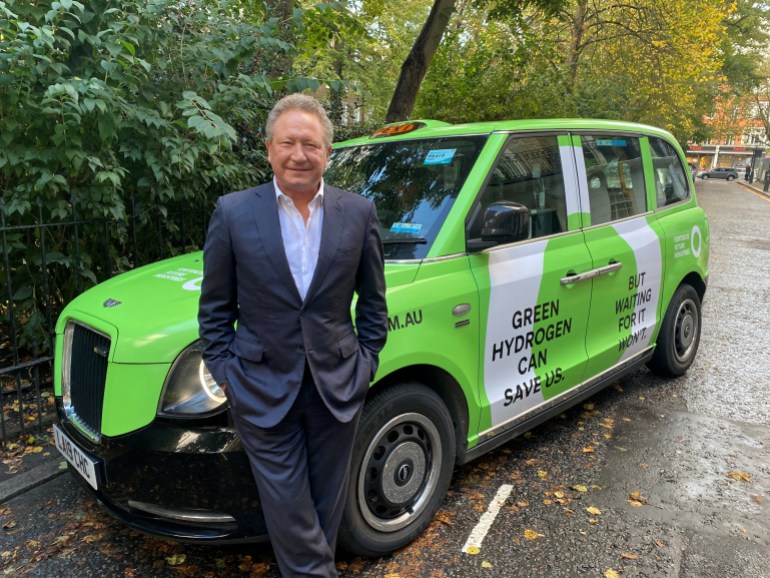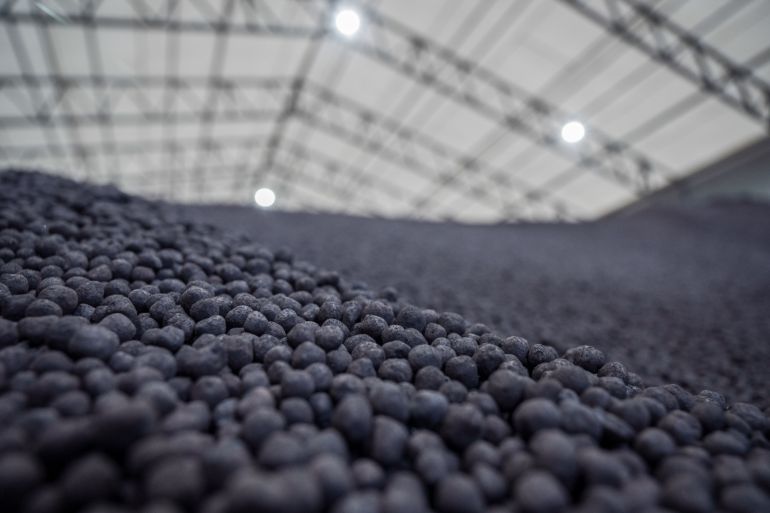Governments, firms make new bet on green hydrogen as climate fix
The number of green hydrogen projects worldwide has increased more than three-fold in less than a year.

It has been billed as the fuel of the future – touted as a solution to everything from Europe’s dependence on Russian fossil fuels to Asia’s ferocious growing appetite for sustainable energy.
After years of being talked up as a potential game-changer, green hydrogen is at last receiving serious financial and labour force commitments from governments and big business.
Keep reading
list of 4 itemsUS Senate reaches bipartisan deal on gun control
Why has defending Brazil’s Amazon become so dangerous?
North Korea’s Kim convenes military meeting amid tensions
In the Asia Pacific, Australia, with its vast areas where either sunshine or wind is in near-constant supply, is emerging as the region’s hub for green hydrogen production, which relies on renewable energy sources such as wind and solar to produce the fuel.
Australian mining magnate Andrew Forrest is building a 2-gigawatt electrolyser and ammonia producing plant in the state of Queensland, with plans to use the project to kick-start green steelmaking.
There are four other green hydrogen projects in the works in Australia, including a plant in Western Australia covering an area half the size of Belgium that is expected to have a generating capacity of up to 26 gigawatts (GW) – enough to produce 90 terawatt-hours per year (TWh), or about one-third of Australia’s total electricity production in 2020.

Europe has even bigger plans. In Spain, the HyDeal Ambition project will come online in 2025, with an expected capacity of 67GW. Germany is pouring 9 billion euros ($9.4bn) into the space to help end its reliance on gas and coal, including a 100-megawatt electrolyser in Hamburg, a hydrogen research centre in Bavaria that has roped in Audi, BMW and Siemens, and a “hydrogen alliance” with Morocco.
In Texas, Green Hydrogen International has announced plans to build an electrolyser to produce clean rocket fuel for Elon Musk’s SpaceX. Hong Kong-based InterContinental Energy is seeking to build a 14GW electrolyser in Oman, while Kazakhstan has announced a 30GW plant.
China, the world’s largest producer and consumer of hydrogen, has set up 30 green hydrogen plants since 2019 and already dominates the market for hydrogen fuel cells. Last year, its production of hydrogen vehicles increased by nearly half to 1,777 units, according to the China Auto Association.
“What we have that we have never had before is a really strong global market pull for decarbonisation. People really want to see things change,” Daniel Roberts, leader of the Energy Technologies Research Program at Australia’s CSIRO science agency, told Al Jazeera.
“Every six months, Siemens and other companies are announcing an electrolyser that is cheaper and bigger. It is remarkable how quickly things are changing from no green hydrogen to massive investments.”
Hydrogen, the most abundant element in the universe, was first harnessed as an energy source in 1804 when Swiss engineer François Isaac de Rivaz developed a hydrogen-powered combustion engine by extracting the element from water via electrolysis.
The process, in which negative and positive electrodes are placed in water and charged with electricity, forces the hydrogen contained in water to rise to the surface for capture.
Hydrogen made with coal and gas is already widely used to produce methanol for plastics, reductants and ammonia, a key ingredient for artificial fertilisers and diesel. But it is a dirty industry. Black and grey hydrogen, as they are known, release 800 million tonnes of greenhouse gases annually – about the same amount as Germany.
Green hydrogen is an emissions-free alternative that uses renewable energy sources like wind and solar to power electrolysis, leaving only vapour in its wake. And as it ignites more easily than petrol or gas, it could play a vital role in decarbonising hard-to-electrify industries like shipping, aviation, steel- and cement-making.

“This is a fuel which will save the planet,” Forrest, the mining magnate turned green-hydrogen crusader, told US Climate Envoy John Kerry and ministers from other countries at the Green Hydrogen Global Assembly in Barcelona, Spain, in May.
Talk of a hydrogen-based green revolution is not new.
The term “hydrogen economy” was coined by US academic Lawrence Jones in the 1970s and has faded and resurfaced repeatedly, along with new inventions to harness it, over the last half-century.
The 2009 unveiling of the world’s first hydrogen-powered tractor by New Holland Agricultural is a textbook example. Trials showed it could perform all the tasks of the manufacturer’s diesel-powered tractors only with zero emissions and in near silence. But it was never commercialised.
“Hydrogen has come and gone a couple of times because the technology has not been ready, there has not been government willingness to change and the cost has not come down to the point where it can compete with incumbent energy sources. It’s almost like the rings of a tree,” CSIRO’s Roberts said.
Despite its vast potential, less than one percent of global hydrogen production share at present is green, according to Statista. The closest thing to a green-hydrogen plant in operation today is Air-Liquide’s 20-megawatt, low-carbon electrolyser powered by hydroelectricity in Canada. But the tide is turning and fast: between December 2020 and August 2021 alone, the number of green hydrogen projects increased more than three-fold, according to Statista.
Statista forecasts green hydrogen production will climb from current levels of less than one metric tonne per year to 160 million tonnes by 2050. But there are sizable obstacles to the hydrogen economy taking off, most of which come down to cost.
Cost obstacles
Large-scale electrolysers are still too inefficient and too few and far between, and enormous increases in wind and solar energy production are required to bring down input costs. The current retail price of green hydrogen is $5.50 to $6 a kilogramme, according to ICRA, a credit rating agency in India – more than double the retail price of gas or diesel. Hydrogen fuel cells are also considerably less energy efficient than chargeable battery electric vehicles, which is why some environmentalists consider green hydrogen a distraction from electrification.
“There are some industries that currently burn fossil fuels that will be very hard to electrify like steel production and cement production. For these, it could make sense to burn green hydrogen,” Greenpeace EU Spokesperson John Hyland told Al Jazeera.
“But it makes no sense to burn hydrogen in city buses or your building’s heating system when electrification and energy savings will successfully decarbonise these sectors. There’s also a danger that the over-use of hydrogen in Europe will also lead to massive imports of green hydrogen from North Africa, where the production would use a lot of renewable electricity that would otherwise be helping to decarbonise local economies.”
CSIRO researcher Roberts said green hydrogen should not be seen as a silver bullet nor “the fuel of the future,” with decarbonisation being too large and complex a problem to solve with a single new technology or fuel source.
“It is a fuel of the future. It’s part of the solution,” he said.
“To become carbon neutral, we will need to use electrification where it makes sense, such as commuter transport and certain aspects of heating. But once you get to big engines like those on ships or you want to refuel trucks quickly, you’re going to need hydrogen. Together they can offer an effective pathway out of this mess.”